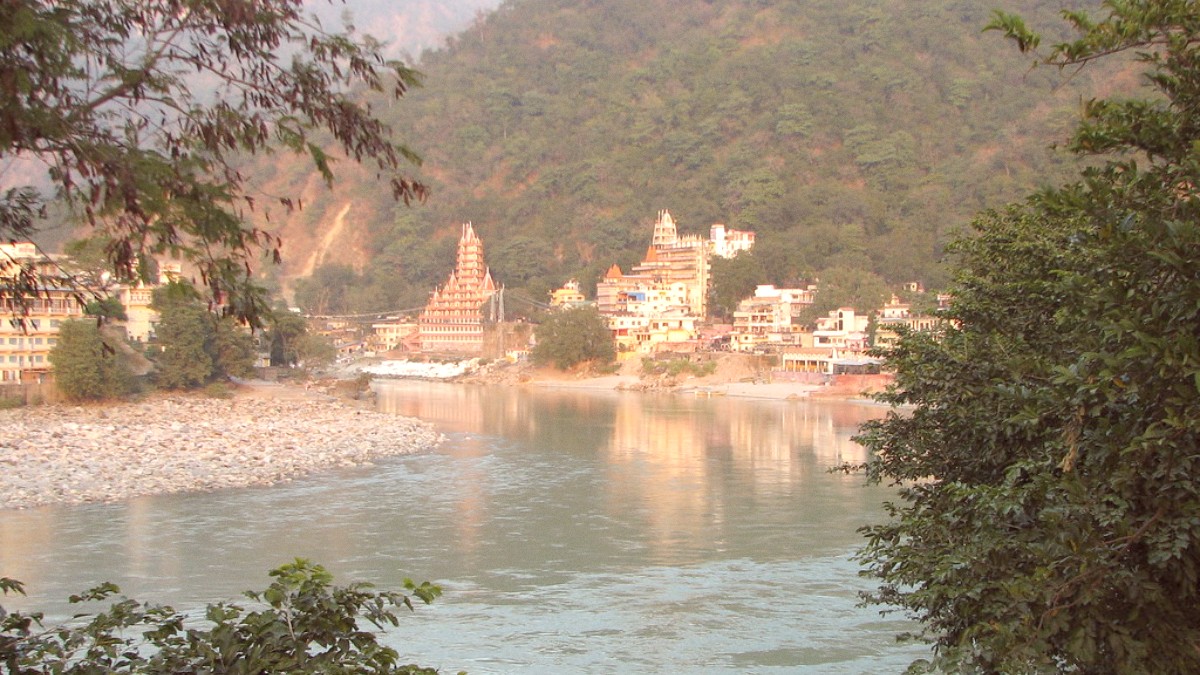
Uttarakhand Uttaranchal, India
These are the must-visit sites that define Rishikesh's landscape and spiritual character.
Rishikesh is broadly divided by the Ganges River. Two main pedestrian bridges, Lakshman Jhula and Ram Jhula, connect the areas.
Rishikesh's historical significance is in its continuous spiritual tradition, not ancient archaeological ruins.
Abandoned ashram gaining global fame when The Beatles stayed in 1968 to learn Transcendental Meditation. Now part of the Rajaji Tiger Reserve. Unique graffiti art and tranquil atmosphere. Entry fee applies: ₹600 for foreigners, ₹150 for Indian citizens. Allow 1-2 hours.
Rishikesh does not extensive archaeological sites. The architecture around old bridges reflects traditional Indian and early 20th-century construction. Older ashrams and temples feature distinct styles.
Various small shrines and memorial spots found along the ghats, commemorating saints or spiritual events.
Rishikesh's natural beauty, dominated by the Ganges and the Himalayas, serene and inspiring experiences.
The central natural attraction. Its clear, emerald waters (outside the monsoon season) and strong current are mesmerizing. The river is revered and forms the spiritual heart of the town.
Rishikesh is cradled in the foothills of the Himalayas, with verdant, rolling hills as a constant backdrop. These hills invite hiking and expansive views.
Witnessing the sunrise over the Ganges is spectacular, especially from the eastern bank (Swarg Ashram side) or from elevated points like Kunjapuri Devi Temple.
Located a short drive (20-30 km) from Rishikesh. Known for Asian elephants, tigers, leopards, and various bird species. Safari options for wildlife viewing. GetYourGuide.
Areas along the Ganges and in the surrounding forests are good for birdwatching, with many migratory and resident species.
Neer Garh Waterfall (small, accessible, refreshing dip), Garud Chatti Waterfall, and Phool Chatti Waterfall are smaller waterfalls in the vicinity, active during and immediately after monsoon.
A Shakti Peeth temple on a hilltop, approx. 25 km from Rishikesh. Renowned for its spectacular sunrise views over the Himalayan peaks and the Ganges valley.
Abandoned ashram gaining global fame when The Beatles stayed here in 1968. Now part of Rajaji Tiger Reserve. Features unique graffiti art and tranquil atmosphere. Entry fee applies.
A sacred bathing ghat. Hindu mythology suggests this is a confluence point of three holy rivers. A significant pilgrimage spot for holy dips in the Ganges. Daily morning and evening Ganga Aarti ceremonies occur here.
The Ganges River, while not a "beach" in the traditional sense, several sandy stretches along are for relaxation, yoga, and meditation.
Venture off the main tourist paths to discover Rishikesh's quieter, equally rewarding spots.
These locations offer profound tranquility away from the crowds and unique photo opportunities.
Discover serene spots for quiet reflection and meditation.
Explore less-visited natural environments and scenic routes.
Capture breathtaking moments and unique scenes.
These spots provide unique perspectives away from typical tourist crowds.
Important etiquette and awareness for your visit.
A respectful demeanor enhances your cultural experience.
Be aware of local wildlife, especially in certain areas.
Awareness ensures a smooth and safe visit.
While not formal public parks in the Western sense, the spacious grounds of ashrams like Parmarth Niketan well-maintained green spaces conducive to quiet walks and meditation.
Some larger hotels and resorts also private, well-maintained gardens for their guests.
Rishikesh does not have large, conventional public parks like those found in major Indian cities. Its green spaces often tied to spiritual centers or natural areas.